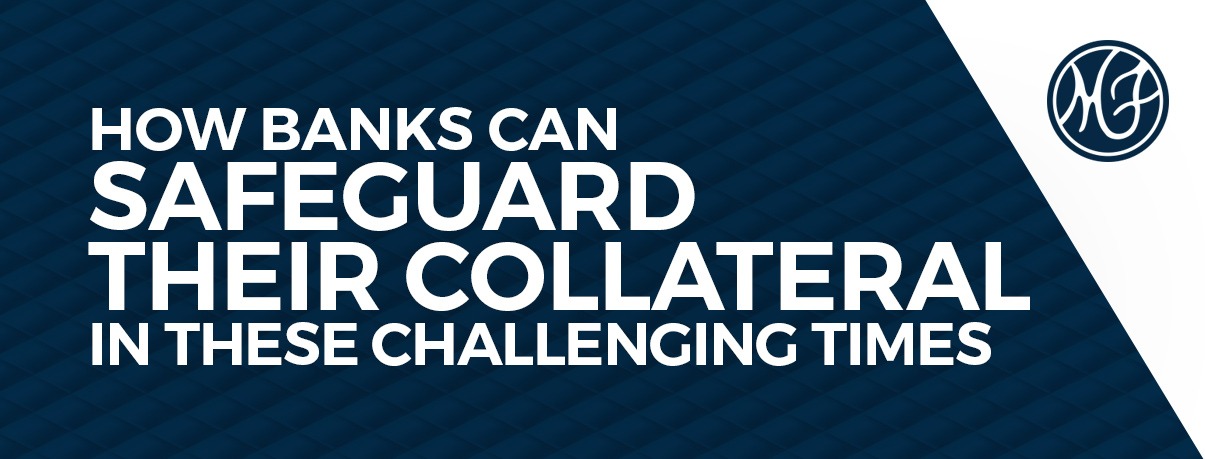The year 2020 has been unprecedented for many reasons. The global pandemic has spread to every continent, tragically claimed many lives and disrupted many sectors of the economy—especially retail, travel, entertainment and lodging—due to social distancing and quarantine restrictions. In fact, chapter 11 business bankruptcy filings rose 26% through June as many companies sought protection from creditors during the first phase of the coronavirus pandemic, according to legal-services firm Epiq Systems Inc. Retailers that declared bankruptcy included J.C. Penny Co. and Pier 1 Imports Inc.
Experts have predicted that banks may have to cope with a larger volume of non-performing loans and assets, while also having to turn down new business as the supply and quality of credit continues to fall until the U.S. completely recovers from the pandemic. In 2019, U.S. banks set aside $55 billion to cover potential loan losses; Accenture estimates that banks will need to retain an additional $210 billion to $265 billion to cover potential write-offs for bad loans in 2020, depending on the severity of the public health aspect of COVID-19. There was some good news for banks in the third quarter as the U.S. job market improved, consumer spending rose and borrowers continued to use extra cash to reduce debt, which boosted the overall credit picture. Banks set aside far less money aside for non-performing loans in the third quarter than they did earlier this year, and had not yet experienced large loan losses.


This is a win-win for both the lender and the client, as it helps reduce the financial risk for the bank while keeping their client’s business healthy.
In this time of uncertainty, banks have been more careful when evaluating new clients’ credit and establishing new accounts. Nevertheless, banks want to avoid denying credit if possible, reducing a credit limit, or even having an account go to workout. According to a report by S&P Global Market Intelligence in June, respondents to the Federal Reserve’s April survey of senior loan officers reported that in 2020’s first quarter they had tightened their standards on many types of loans: i.e., commercial and industrial; commercial real estate; and consumer loans (including credit cards and auto). Bankers were still not confident what the extent of their losses would be. However, bank officers who responded to the survey said they had placed many of their loans on deferral and were not making as many new loans. However, their existing book is where the significant risk factors lie. Therefore, they were careful when signing new customers.
When it comes to commercial loans, banks and their clients, and the customers those clients sell to, are intimately connected, along with the financial risk—especially in this fraught period for many companies. As the first lien holder on their clients’ assets, the bank holds receivables as collateral. Whether a client’s sales are up or down or whether the client’s balance sheet is weak or strong, the bank can see significant losses if their clients’ customers declare bankruptcy. Fortunately, there is a smart and simple way to help safeguard the bank’s financial investment — factoring, an often misunderstood and overlooked solution.
Entrepreneur defines factoring as “a financing method in which a business owner sells accounts receivable at a discount to a third-party funding source to raise capital.” While that is undoubtedly one of the services a factor can provide, it is hardly the only one. In fact, in many cases, the factor does not even act as a lender.
The heart of old-line factoring is offering credit protection, underwriting the credit risk on accounts receivables. “When a bank asks us to factor a client’s A/R, it’s because they want greater protection for the A/R they’re lending against,” says Daniel R. Milberg, President of Milberg Factors, Inc., a leading, privately held firm focused on factoring and receivables financing.
“This is a win-win for both the lender and the client, as it helps reduce the financial risk for the bank while keeping their client’s business healthy.” Additionally, as part of a factoring relationship, the client outsources the administration of the receivables. “As a factor, we service those receivables, making the collection calls on past due invoices and applying the cash on the invoices that get paid. In certain cases, along with factoring a client’s receivables, banks ask us to go a step further and manage their loans, monitor the collateral, provide regular reports to the bank, and participate in the financing.”


In this way, Milberg not only takes on the role of a factor, but becomes a full partner in the financing.
Milberg Factors is a well-capitalized, financially stable firm with deep financial resources and an 80-year track record. We offer flexible product structures across many different industries, tailored to meet the needs of particular situations. Milberg Factors has a seasoned management team with an experienced credit department, A/R staff and operations team in place to help deliver the first-class service our clients and bank partners expect.
Credit Protection and Management
- Review and analyze the credit strength of our client’s customers and establish customer credit lines
- Factor the client’s receivables to provide the lending group with maximum control over the A/R collateral
- Take risk of loss for an account debtor’s financial inability to pay
- Eliminate/reduce bad debt expense
3rd Party Accounts Receivable Management
- Outsource back office services, including collections, cash application, deductions and dispute identification
- Forward cash to lender to apply to the client loan or remit cash directly to client, as directed
Loan Management (Optional)
- Perform our own investigation of the bank’s or bank group’s client to make an independent assessment of the client’s financial condition and future prospects
- Participate in the financing of the client
- Make loan advances on behalf of the lending group
- Issue reports to the lending group at least weekly on the loan balance, open L/Cs, collateral balance and month-to-date loan and collateral activity
The bottom line: Milberg Factors never seeks to compete with banks, but rather brings added value to existing and new bank client relationships. Through credit protection and monitoring, and accounts receivable management, we help add an extra level of security — and that’s good for everybody’s business.
CONTACT
For more information about Milberg Factors, Inc., please contact Daniel R. Milberg at (212) 697-4200, David M. Reza at (818) 649-7587, or Ernest B. White at (336) 714-8852, or email us at info@milbergfactors.com.








